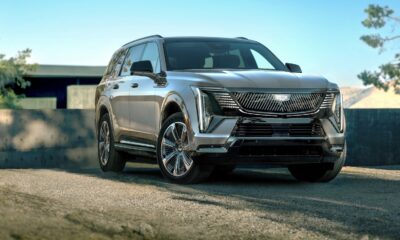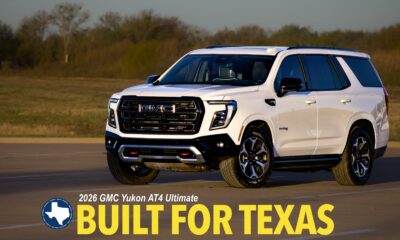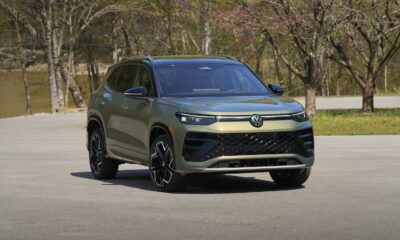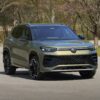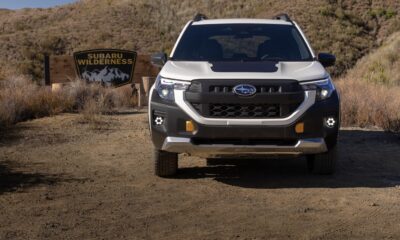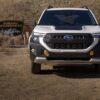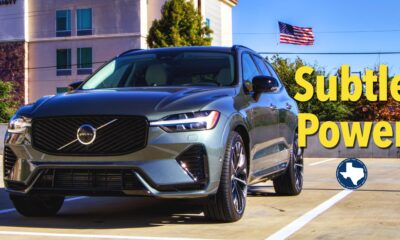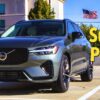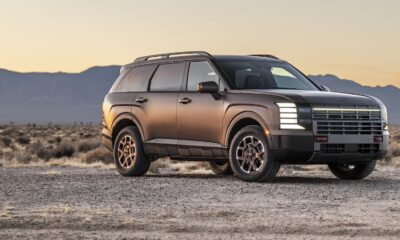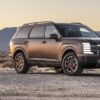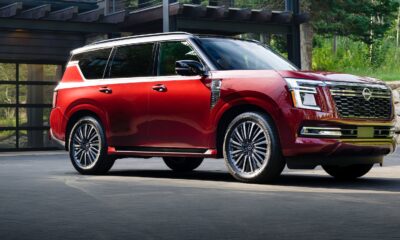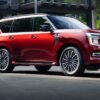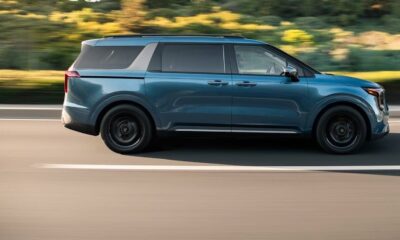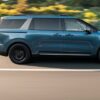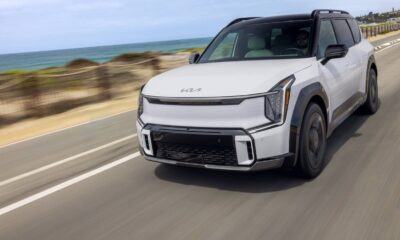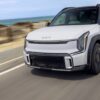Car Reviews
Does Mazda’s Newest Hybrid Crossover Deliver? 2025 CX-50 Hybrid Review
Mazda has always been known for making vehicles that look sharp, drive better than expected, and deliver a near-premium feel without pushing into luxury pricing. The CX-50, introduced just a couple years ago, quickly became a standout in the crowded compact crossover segment. Now, for 2025, Mazda is broadening the lineup by introducing the CX-50 Hybrid—the brand’s newest hybrid crossover. It promises Toyota-sourced hybrid technology paired with Mazda’s signature design and driving dynamics. But does it deliver on that promise?
In short: the CX-50 Hybrid is stylish, refined, and engaging to drive. The only catch is fuel economy that doesn’t quite match the hype.
Styling That Stands Out
Mazda continues to lead the segment in design. The CX-50 looks like no other compact crossover—it’s lower, wider, and more athletic than most, with clean lines and just enough rugged cladding to suggest an outdoorsy spirit. Compared to something like the Honda CR-V or Toyota RAV4, the CX-50 looks more refined and intentional, less utilitarian.
For 2025, Hybrid models get subtle tweaks to distinguish them from gas versions. There’s a slightly different front bumper design, unique wheel choices—including the turbine-inspired 19-inch wheels on the Premium Plus trim—and different finishes on the roof rails and exhaust tips depending on the package. These changes aren’t dramatic, but they give the Hybrid lineup its own visual identity without breaking the CX-50’s overall aesthetic.
Cabin Vibes
Step inside and Mazda’s attention to detail becomes obvious. The CX-50’s interior strikes a balance between sporty and upscale, with horizontal dash lines, a driver-focused layout, and high-quality materials throughout. The Premium Plus Hybrid trim tested here featured black leather with brown accents and stitching, giving the cabin a subtle but warm contrast.
The panoramic moonroof makes the cabin feel bright and airy, while the wide center console and raised seating position keep it feeling secure and SUV-like. Mazda’s infotainment system remains a sticking point, though. The 10.25-inch display looks sharp but sits too far back to be a touchscreen in most functions, forcing you to use the rotary dial on the center console. Mazda claims this is safer, but in practice it often feels clunky compared to the tap-and-swipe convenience of its rivals.
That said, the rest of the tech is strong. Wireless Apple CarPlay and Android Auto are standard, Alexa Built-In makes it easy to control the cabin or even your smart home, and the 12-speaker Bose system fills the cabin with rich sound. Premium touches like ventilated front seats, a full-color Active Driving Display (HUD), and memory settings for the driver’s seat make the Premium Plus trim feel like money well spent.
Cargo and Practicality
Mazda designed the Hybrid system to fit without compromising utility. The rear liftgate opens to reveal 29.2 cubic feet of cargo space behind the rear seats. Fold those seats flat and capacity expands to 56.3 cubic feet. That’s plenty of room for luggage, camping gear, or even a couple of bicycles if you take the front wheels off. The hybrid battery sits neatly under the cargo floor, so you don’t lose space compared to gas-only versions.
Toyota Tech, Mazda Feel
The biggest story here is what lies under the hood. Mazda partnered with Toyota to adapt its proven hybrid system, pairing a 2.5-liter naturally aspirated four-cylinder with three electric motors and a hybrid battery. The system produces a combined 219 horsepower and 163 lb-ft of torque, channeled through an electronically controlled CVT to all four wheels via Mazda’s electric AWD.
On paper, this setup looks like a Toyota RAV4 Hybrid clone. But behind the wheel, Mazda’s calibration makes it feel different. Throttle response is tuned to be sharper, and the e-CVT doesn’t drone as much under hard acceleration. Steering is typically Mazda—direct, nicely weighted, and more connected than anything else in the class. The CX-50 feels planted in corners, with good body control and a suspension that smooths out bumps without going soft.
Driving modes add flexibility: Normal for everyday use, Power for sharper throttle response, and Trail for balancing torque across the wheels on loose surfaces. The Hybrid isn’t a hot rod, but it feels more engaging than most hybrids, which is exactly what Mazda wanted.
Fuel Economy: The Reality Check
This is where the CX-50 Hybrid stumbles a bit. The EPA rates it at 38 mpg combined (39 city, 37 highway), which on paper is competitive with the Toyota RAV4 Hybrid, Honda CR-V Hybrid, and Hyundai Tucson Hybrid. But in my week of testing, I averaged around 31 mpg. That’s good for a compact SUV with all-wheel drive, but it falls short of Mazda’s promise and trails the real-world results I’ve seen from Toyota and Honda.
To be clear, 31 mpg is still a noticeable improvement over the gas-only CX-50, which averages around 25–28 mpg depending on the trim. But for buyers who are strictly chasing efficiency, rivals do better. The Mazda’s trade-off is that it feels more connected and more fun to drive than those alternatives—so it comes down to what you value most.
Pricing and Lineup
Mazda now gives CX-50 buyers three clear choices: the naturally aspirated 2.5 S for value, the 2.5 Turbo for performance, and the new Hybrid for efficiency.
- CX-50 2.5 S models start at $30,500
- CX-50 Hybrid models start at $33,970
- CX-50 Turbo models start at $41,000
The Premium Plus Hybrid trim I tested starts at $40,050. Add Wind Chill Pearl paint for $450 and Mazda’s $1,495 destination fee, and the as-tested price came to $41,995. That positions it just below the top Turbo Premium Plus trim ($43,500), giving buyers the option to choose between outright performance or hybrid efficiency for about the same money.
The Competition
The CX-50 Hybrid enters a segment dominated by three strong competitors: the Toyota RAV4 Hybrid, Honda CR-V Hybrid, and Hyundai Tucson Hybrid (as well as its Kia Sportage sibling). All of them offer similar pricing, with combined mpg ratings closer to 38–40 in real-world conditions.
Mazda doesn’t quite match them on efficiency, but it counters with design and driving feel. The CX-50 looks and drives more like a near-premium SUV, with a sharper style and more engaging dynamics than the competition. For buyers who care about the drive as much as the numbers, that’s a compelling trade-off.
Final Thoughts
So, does Mazda’s newest hybrid crossover deliver? In most ways, yes. The 2025 CX-50 Hybrid is one of the best-looking compact crossovers you can buy, its interior feels a step above mainstream, and its driving dynamics live up to Mazda’s reputation. The hybrid system is smooth, seamless, and tuned to feel more natural than rivals.
The downside is fuel economy. If you’re expecting to hit 38 mpg, you may be disappointed when real-world numbers land closer to 31. But if you’re a Mazda fan—or just someone who wants a hybrid that doesn’t drive like an appliance—the CX-50 Hybrid makes a lot of sense.
Mazda is now offering buyers choice: gas, turbo, or hybrid. The Hybrid fits perfectly for those who want Mazda’s signature style and dynamics with a meaningful boost in efficiency, even if it doesn’t set new records at the pump.
For a closer look, be sure to check out my full video review, where I walk through the design, interior details, and driving impressions in real time.
























